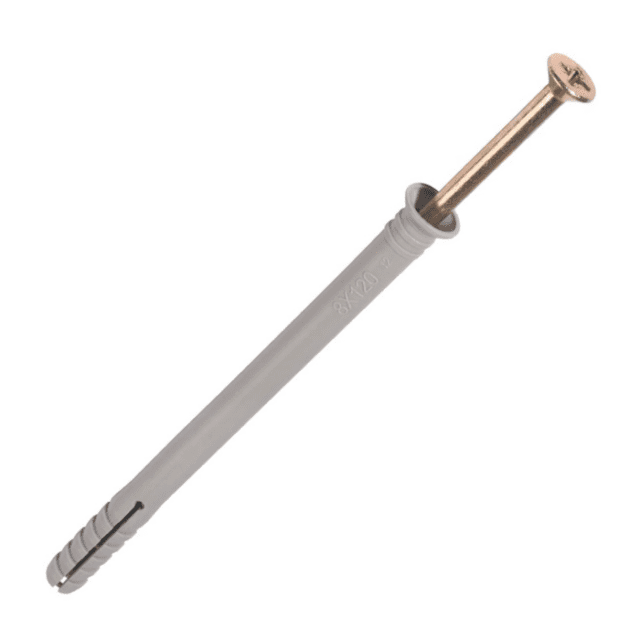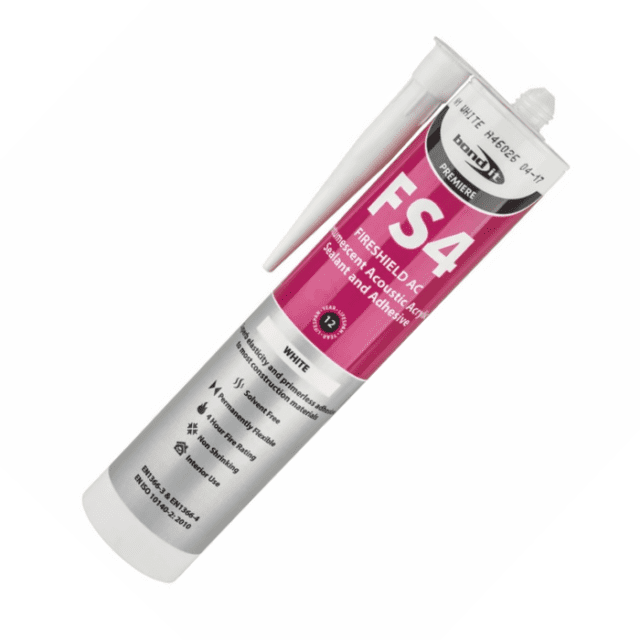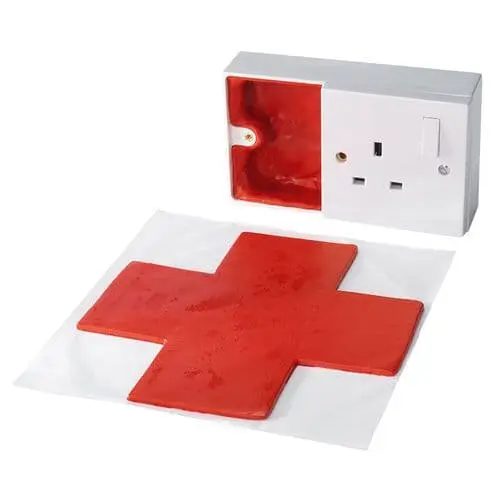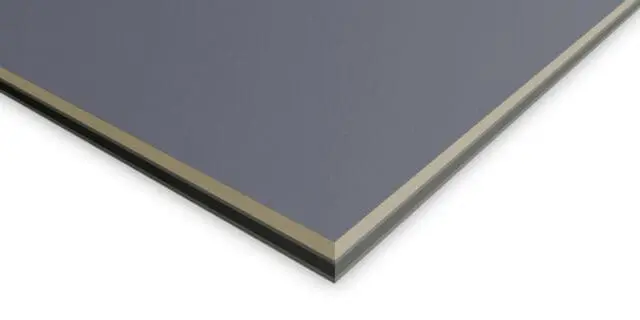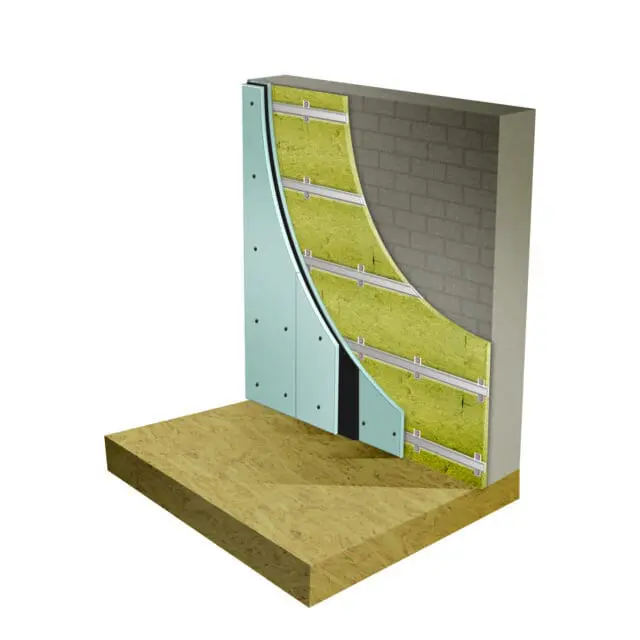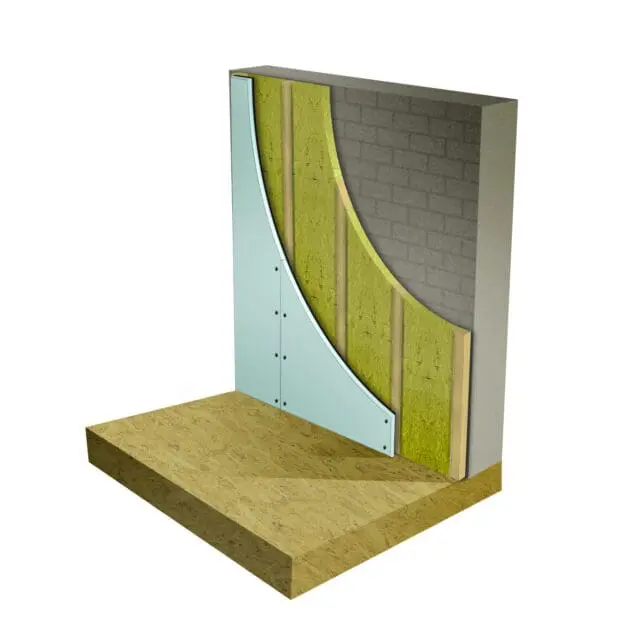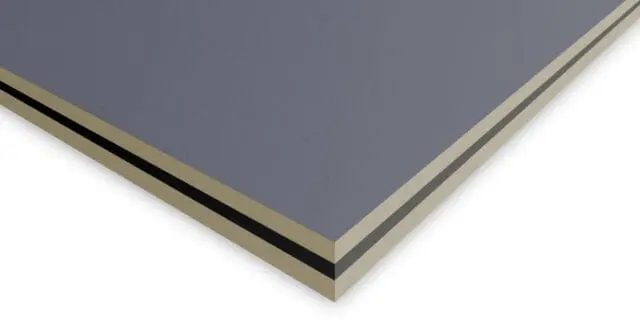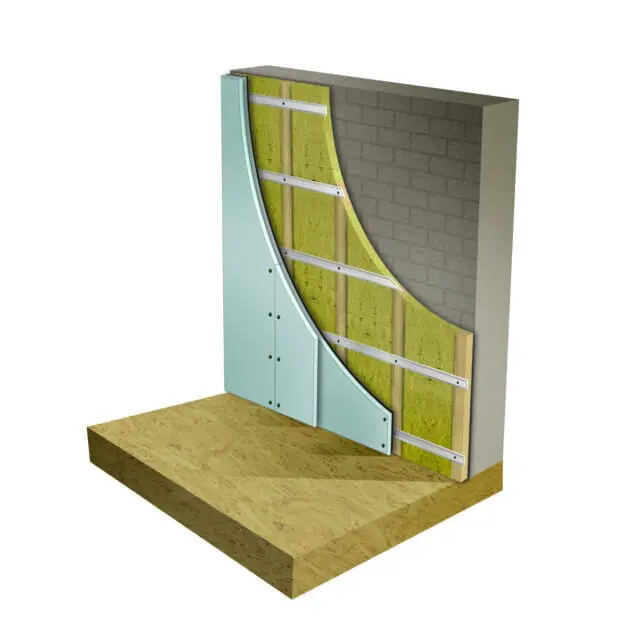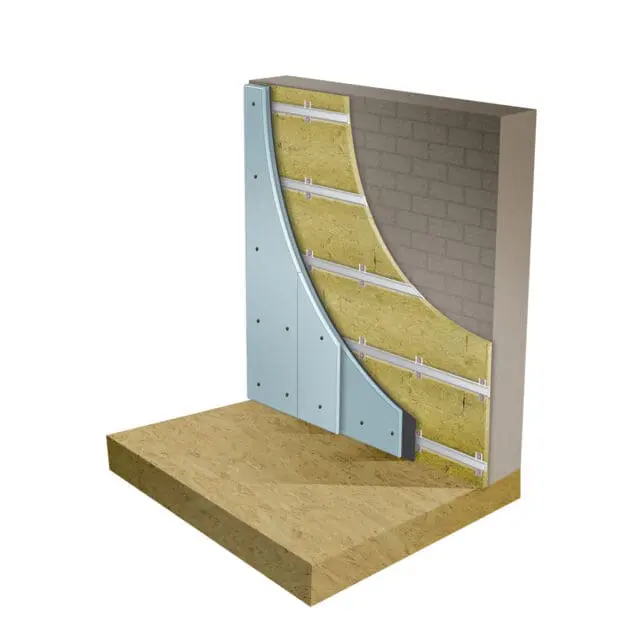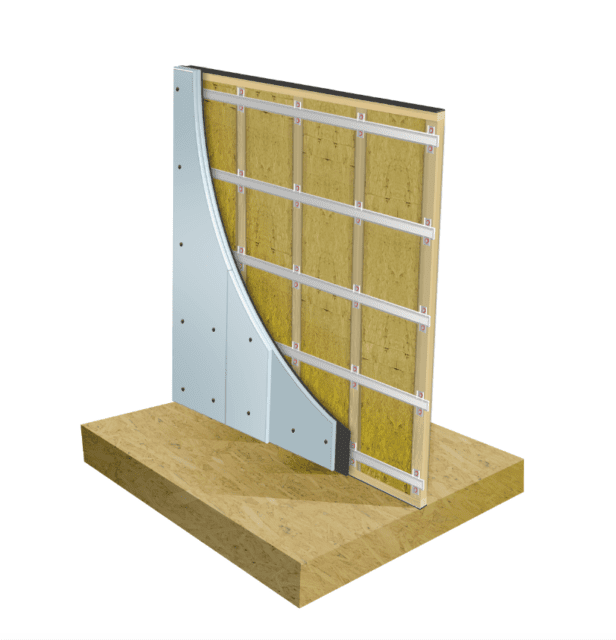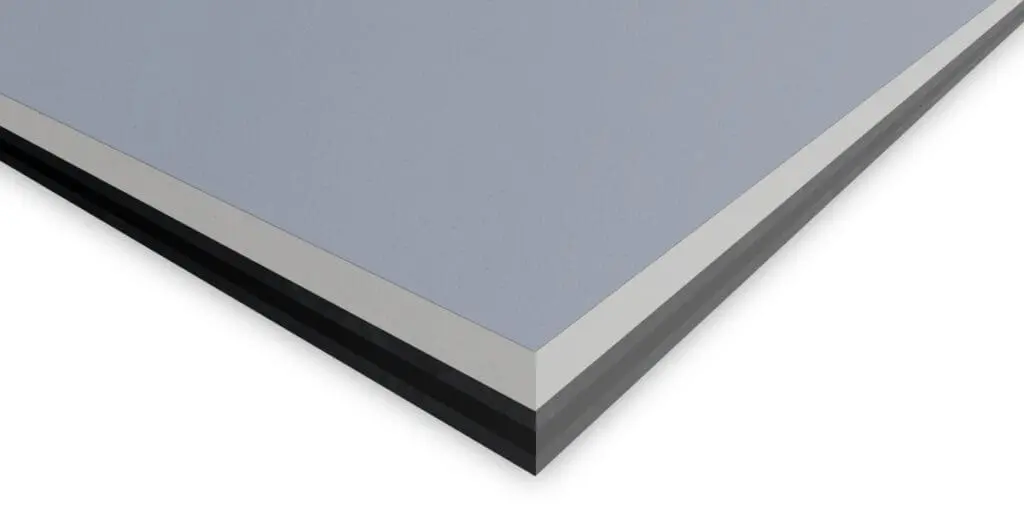
Sound Proof Silent Wall Panel 30mm
£59.95 ex. VAT
In stock, ready to ship
Estimated Delivery: 3 - 5 Days
(3rd Jul - 5th Jul)
Noisestop Silent Panel 30mm achieves the highest level of sound insulation of any direct-to-wall soundproofing panel. With a noise reduction level of 52dB, this soundproof panel is the best option for soundproofing stud and party walls against conversation and TV noise. Increase the sound insulation of lightweight stud walls and party walls without compromising space with this 30 mm thick soundproof board. Four layers of high mass, sound absorption, and sound damping materials are combined to ensure the Noisestop Silent Panel is unrivalled in its soundproofing capabilities.
- Soundproofing: Party walls and stud walls
- Noise type: Airborne noise (TV, radio, conversation medium noise levels)
- Noise reduction: 52dB
- Size: 30mm x 1200mm x 1200mm tapered edge (1.44sqm)
- Cost: £41.63sqm
- Installation: DIY friendly
- Fixing method: Hammer fixings, drywall screws
- Finishing options: Plastering, tape and fill, paint or wallpaper
Noisestop Silent Panel – Direct to Wall Soundproofing Panel for Maximum Noise Reduction
High-Performance Soundproofing Solution for Party Walls and Stud Walls
Say goodbye to noisy neighbours and unwanted disruption with the Noisestop Silent Panel, your go to solution for direct to wall sound insulation. Designed to tackle everyday domestic noise issues, this high-performance soundproofing panel is ideal for solid party walls and timber or metal stud walls, offering a fast, effective way to restore peace and quiet in your home.
Why choose the Noisestop Silent Panel
- Direct-to-Wall Installation: There is no need to build a stud frame. For a slimline finish, simply fix the panels directly to the existing walls.
- Reduces Airborne Noise – Effectively blocks sounds such as talking, TV, and general household noise through adjoining walls.
- Slimline Design – At just 30mm thick, the Silent Panel adds minimal depth, making it perfect for rooms with limited space.
- Versatile Application – Suitable for use on masonry party walls or as part of a stud wall build-up in renovation or new build projects.
- Quick and Easy to Fit – DIY friendly and compatible with most mechanical fixings for hassle-free installation.
Whether you’re dealing with loud conversations, TV noise, or general disturbances, the Noisestop Silent Panel delivers professional-grade soundproofing in a compact, easy-to-install solution.
Noisestop Silent Panel Wall Soundproofing 30mm

- Acoustic Plasterboard 15mm – Heavier than standard plasterboard, which adds density to the area. It is finished in the same way as standard plasterboard.
- 3mm Mass-loaded vinyl 7.5kg/m² – High mass barrier layer for sound absorption.
- Closed cell foam 9mm – Acoustic grade foam to dampen and absorb vibration sound.
- 3mm Mass-loaded vinyl 7.5kg/m² – High mass barrier layer for sound absorption.
- Thickness: 30mm
- Size: 1200mm x 1200mm (1.44sqm)
- Weight: 40kg per sheet
- Fire: Thirty minutes
Thermal Resistance R:
- Acoustic plasterboard 15 mm = 0.050 m2 K/W
- Closed Cell Foam: 0.23 m² K/W
- Mass-loaded vinyl 0.14 m² K/W
Thermal Conductivity λR:
- Acoustic plasterboard 0.25 W/mK to BS EN 12524:2000
- Closed Cell Foam: 0.039 W/mK
- Mass-loaded vinyl 0.037 W/mK
Reaction to Fire
- Acoustic plasterboard 15mm Euroclass A2-s1,
- Closed Cell Foam: FMVSS 302
- Mass-loaded vinyl 10kg EN 13501-1 B-s2,d0 (2)
Brick Wall
Untreated brick wall DnT,w
Single skin 100mm brick wall 38db
Treated brick wall DnT,w
Noisestop Acoustic Panel applied 52dB
Improvement DnT,w
Noise reduction with treatment 14dB
Stud Wall
Untreated stud wall DnT,w
Untreated 100mm stud wall with acoustic insulation and 12.5mm plasterboard on either side 36dB
Treated stud wall DnT,w
Noisestop Acoustic Panel applied to one side 52dB
Improvement DnT,w
Noise reduction with treatment 16dB
Note: Every 10 decibels(dB) reduction in noise level is roughly perceived as a halving of the perceived loudness. So, for instance, if you have a sound that measures 70dB and it decreases to 60dB, it would sound about half as loud to the human ear. Decibels explained.
NOTE: When the panels are installed, the plasterboard layer faces into the room, and the acoustic membrane on the back of the board goes onto the wall.
- Ensure the surface you are applying the panels is in good condition, and do any remedial work on the existing wall to ensure it is flat and secure before you attach the panels.
- Remove skirting boards and coving and extend electrical outlets. Wall linings, such as wallpaper, do not need to be removed before the installation.
- Begin by installing the first row of panels. Use 2-3mm packers or equivalent between the floor and the boards to support them and ensure they are isolated from the floor.
- Apply the Noisestop Silent Panel to the walls using nine hammer fixings per board. The panel’s composition will absorb any potential noise transfer across the fixings.
- Use acoustic sealant between each panel as you put them together.
- To reduce flanking sound transmission, leave a 2-3mm gap around the perimeter of the wall. Once the installation is complete, apply an acoustic sealant to fill the gap.
- Cut the panels using a hand saw or circular saw.
- Skim plaster or tape and fill the tapered edge.
- Upon completion of the soundproofing, reinstate the skirting and coving.
- If you are reinstating electrical outlets, use acoustic putty pads inside recessed back boxes.
Due to the nature of most of the materials we supply, orders are typically delivered on pallets.
All orders will be wrapped, protected, and secured to the pallet to ensure they arrive in the best possible condition. Goods will be delivered as near to the property as possible. The drivers will not be able to carry orders into your property.
Deliveries are made between 8am and 6pm, Monday to Friday.
Once an order has been placed, you will be notified of the expected delivery date. Please ensure someone is available to sign for the delivery.
We charge a flat delivery rate of £60 plus VAT for palletised deliveries. We do not charge per pallet, no matter how many pallets are used to deliver your order.
Orders placed for items weighing less than 20kg will be sent via courier for £20 plus VAT.
We have a high stock level and typically deliver orders in approximately three to four working days.
If you want to speak to us regarding your delivery, please call 01423 339163.
Please check out our full delivery terms for more details.
Alternative solutions
Alternative solutions that will offer different levels of soundproofing or another kind of installation method that might suit your requirements.
Soundproof panels FAQS
Soundproof panels are specialised acoustic panels designed to reduce sound transmission between spaces. They are typically made of dense, sound-absorbing materials such as soundproof plasterboard, mass-loaded vinyl and acoustic foams, which help to block and absorb sound waves.
No. Soundproof panels significantly reduce sound transmission, but achieving higher levels of soundproofing requires combining various methods and materials (such as sound isolation clips, resilient channels and acoustic insulation). See our Soundproofing Systems for more information when higher levels of sound insulation are required.
Yes, many soundproof panels are designed for easy DIY installation. They are typically installed with screws or adhesives depending on the type of panel and the surface they are being applied. Products frequently used with soundproof panels include the following.
- Acoustic sealants – seal the edges and the perimeter of the wall to keep the area airtight.
- Hammer fixings – Secure sound panels to most solid walls using a hammer fixing. Other fixings, such as drywall screws, are used for different backgrounds, such as stud work or metal furring channels.
Most soundproof panels have an outer face of plasterboard, which allows for finishing, such as a plaster skim like a standard plasterboard. Our soundproofing boards have a tapered edge that enables them to be taped and filled as an alternative to plastering. Decorating straight onto the panel’s surface with paint or wallpaper is possible.
Once the soundproofing has been installed, the electrical outlets can be reinstated. We recommend using an acoustic putty pad inside the electrical back box to ensure acoustic integrity.
You can attach things such as shelves and mirrors over soundproof panels. If the wall behind the panel is a solid wall, use a suitable fixing that connects to the wall behind the panel; if it’s a stud wall, use a suitable stud wall plug.
Got a question?
Send us a message, and we’ll respond as soon as possible. Alternatively, call 01423 339163 to speak with an adviser.

